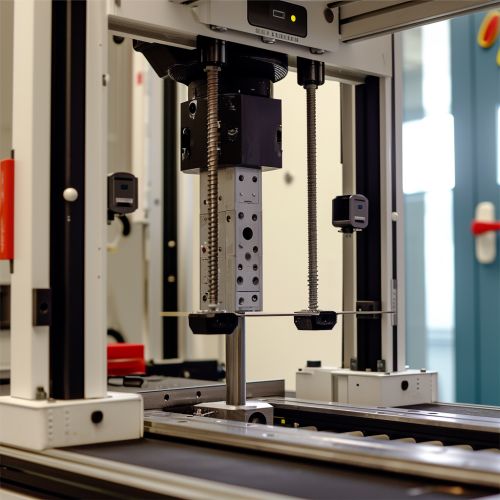Tensile Testing
Introduction
Tensile testing, also known as tension testing, is a fundamental materials science test in which a sample is subjected to a controlled tension until failure. The results from the test can be used to select a material for an application, for quality control, and to predict how a material will react under other types of forces.
Basic Principles
The basic idea of a tensile test is to place a sample of a material between two fixtures. These fixtures are then moved apart, causing the material to stretch. The force applied to the material and the amount of deformation (stretch) of the material are measured. This data is used to calculate the stress-strain curve, which provides valuable information about the mechanical properties of the material.


Stress-Strain Curve
The stress-strain curve is the most important result from a tensile test. It can provide a lot of information about a material, including the elastic modulus, yield strength, ultimate tensile strength, and ductility.
Elastic Modulus
The elastic modulus, also known as Young's modulus, is a measure of the stiffness of a material. It is defined as the ratio of stress (force per unit area) to strain (proportional deformation) in the elastic deformation region.
Yield Strength
The yield strength is the stress at which a material begins to deform plastically. Prior to the yield point, the material will deform elastically and will return to its original shape when the applied stress is removed.
Ultimate Tensile Strength
The ultimate tensile strength is the maximum stress that a material can withstand while being stretched or pulled before breaking. It is an important measure of a material's ability to perform in an application that requires tension.
Ductility
Ductility is a measure of a material's ability to deform and stretch under stress. It is often characterized by the material's ability to be stretched into a wire.
Test Procedures
The procedures for conducting a tensile test are standardized by organizations such as the International Organization for Standardization (ISO), ASTM International, and the Japanese Industrial Standards (JIS). These procedures specify the shape and size of the test specimen, the speed of the testing machine, and the data to be recorded.
Applications
Tensile tests are used in many industries and applications. Some of the most common uses are in the automotive, aerospace, and construction industries. Tensile tests are also used in academic and industrial research to develop and test new materials.
